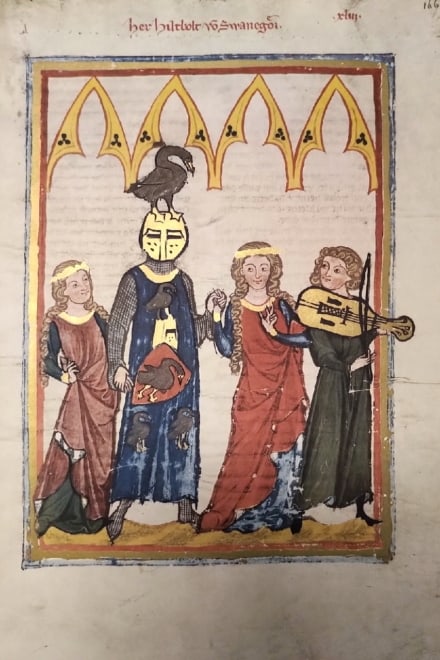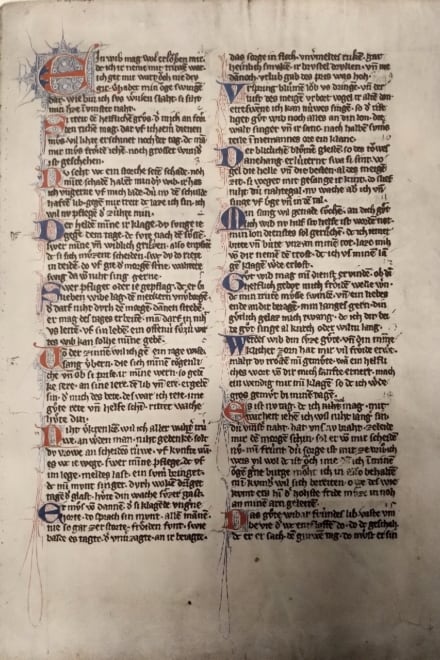Talk given by Nicole Sauerwein-Pittich and Ralph Pittich (Pro Lichtdruck gemeinnützige UG) during the News session at the conference of the Association of European Printing Museums, Safeguarding intangible heritage: passing on printing techniques to future generations, held at the Nationaal Museum van de Speelkaart, Turnhout, Belgium, 23-26 May 2019.
Ladies and gentlemen,
we are grateful for the opportunity to speak to you here today about the topic ‘Preserving collotype printing in Germany’. However, Germany is only the starting point for our ambitious undertaking to prevent the special printing technique ‘collotype’ from falling into oblivion (being forgotten).
We do not want to confine ourselves to preserving collotype only in Germany, but are grateful for every country in which it is possible to preserve or rebuild a collotype company. Our activity started in Germany with the foundation of the non-profit organisation Pro LichtDruck, which means ‘pro-collotype’. The organisation has set itself the task of getting collotype recognized as an intangible cultural heritage in urgent need of preservation, promoting the few operations still active and, in the long term, sustaining collotype with the creation of new printing workshops. We are convinced of the quality of collotype products and believe in the cultural and economic potential of the collotype process.
So let us see why and take a brief look at the peculiarities of the unique collotype process.
Photos, drawings, graphics, ancient manuscripts, sheet music and much more can be produced and reproduced without a screen using the collotype process. The prints provide durability and fastness to light for several hundred years. The ‘Queen of reproduction technology’, as collotype is also titled, is considered as the first choice for the permanent reproduction and archiving of cultural treasures (facsimile) with this highest reproduction quality and durability.
As an example, we have brought you a facsimile from few pages of the 14th-century Codex Manesse, also known as the Große Heidelberger Liederhandschrift or ‘Great Heidelberg collection of ballads’. It was compiled in Zurich between 1305 and 1340. The original is in the possession of the Heidelberg University Library. It was last presented for a short time during the university’s 625th anniversary in 2010 and then disappeared back into the archive.
Collotype offers the opportunity to put cultural treasures like this into circulation and make them accessible to the public in near original quality. Countless cultural treasures are simply archived and are kept out of public view to avoid the risk of loss or damage. Collotype can and must be used to counteract this.
But how does collotype work exactly and when was it invented?
Collotype is a direct printing process based on the use of photosensitive gelatin. Using an original negative or repro, the gelatin, which is on a glass plate, is exposed to UV light. As a result, a swelling relief and reticulated grain (Runzelkorn) are produced as a print-giving agent. Brightness differences can be reproduced without a screen on a variety of materials. The glass plate can be used on a hand press or in special machines as a printing matrix. (For more details see www.prolichtdruck.de/prolichtdruck/lichtdruck-2/ where you will find a video by Benrido Kyoto).
Collotype was invented in the nineteenth century, when a way was being sought to duplicate photographs. The technology and the knowledge of the process are correspondingly old.
We have already heard a lot about the decision of the German Unesco Commission to include the ‘Artistic printing techniques of refief, intaglio, planographic, puncture and their mixed forms’ (which thus includes the collotype printing process) in the Nationwide list of intangible cultural heritage. We are convinced we have to go a step further with your support for collotype printing.
After the heyday of 1900, when there were hundreds of workshops worldwide, collotype printing has almost been forgotten. In addition to active workshops in Kyoto, Beijing, Leipzig and Darmstadt, there are still a few enthusiasts who work with collotype. If anybody knows of more, please let us know.
In recent years, several workshops worldwide have closed or stopped working on collotype printing, so the support for collotype and the knowledge of the process are disappearing extremely fast. There are hardly any new people learning collotype. In addition to financial reasons, this may also be due to the ignorance of the public about the great potential that lies in collotype. There is little time left to save collotype, to give it a renaissance and to reestablish it in public perception.
We therefore want to register collotype with Unesco as an intangible cultural heritage in urgent need of preservation. With appropriate international support and public relations people should be inspired to learn the technology, artists should be convinced again to work more with collotype and investors must be found to maintain existing workshops and build new ones. The application process alone can trigger a wave of support and have positive effects.
The non-profit Pro Lichtdruck which we have founded has the goal of not only preserving collotype, but also of using it again, whether for art editions or facsimiles of other cultural assets. In our view the cultural potential is so huge that there is no alternative but to give one’s eyeteeth to preserve collotype. Above all, the preservation of collotype as a cultural heritage in order to preserve other cultural heritage is our motivation.
We want to build up an international network, pool information on the technology and the further development of collotype 2.0, organize exhibitions, print archiving and public relations and accompany the application to Unesco. Of course, investors and all sorts of other supporters also need to be found to foster the goal of supporting collotype workshops and artists and thus maintaining the process.
Following the idea that tradition is not the warship of ashes but rather the preservation of fire: we hope for your interest and ask for your support:
- whether it be in the form of financial help with our crowdfunding campaigns,
- support in the creation of an international network of interested parties and donors,
- support with ideas for achieving our goals,
- the spread of our ideas and projects through your networks,
any help is welcome, every kind of support takes us a step ahead.
Please take a look at our website www.prolichtdruck.de, check if you can join our current crowdfunding campaign on www.Startnext.com/prolichtdruck remaining until June 30th. And of course please contact us afterwards for more information and to make first contacts. Via mail@prolichtdruck.de or phone +49 6073 7199 566.
This AEPM conference offers us all an excellent opportunity to pool our interests and to drive forward the goal of preserving the various printing processes. We want to do this especially for collotype.
Thank you for your attention. Have good day.
Nicole Sauerwein-Pittich and Ralph Pittich

